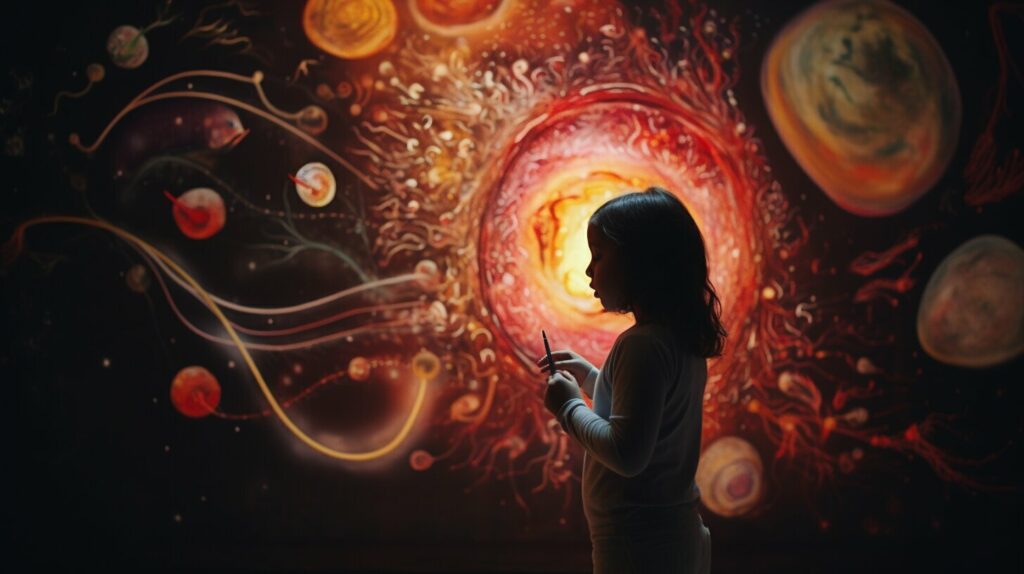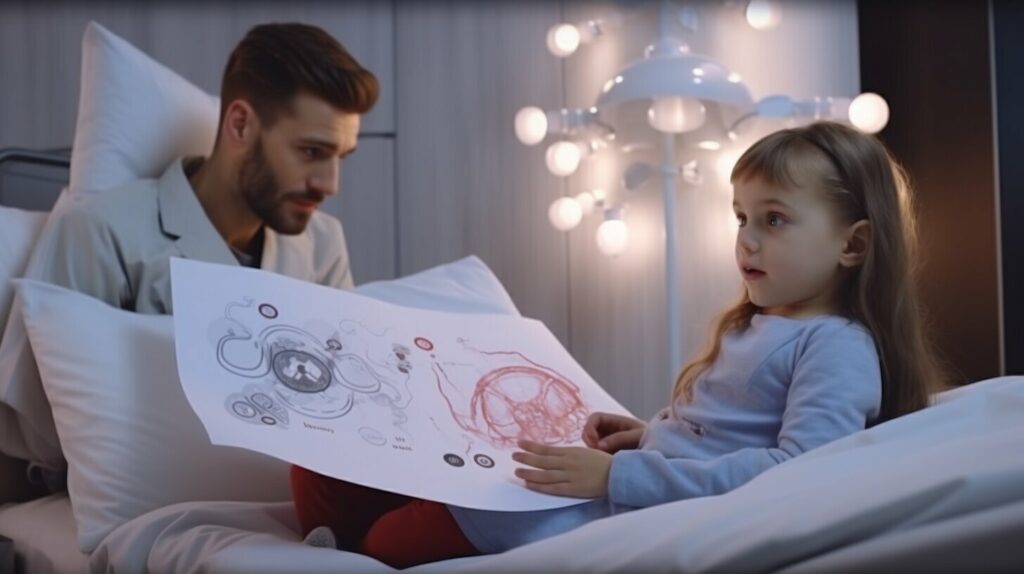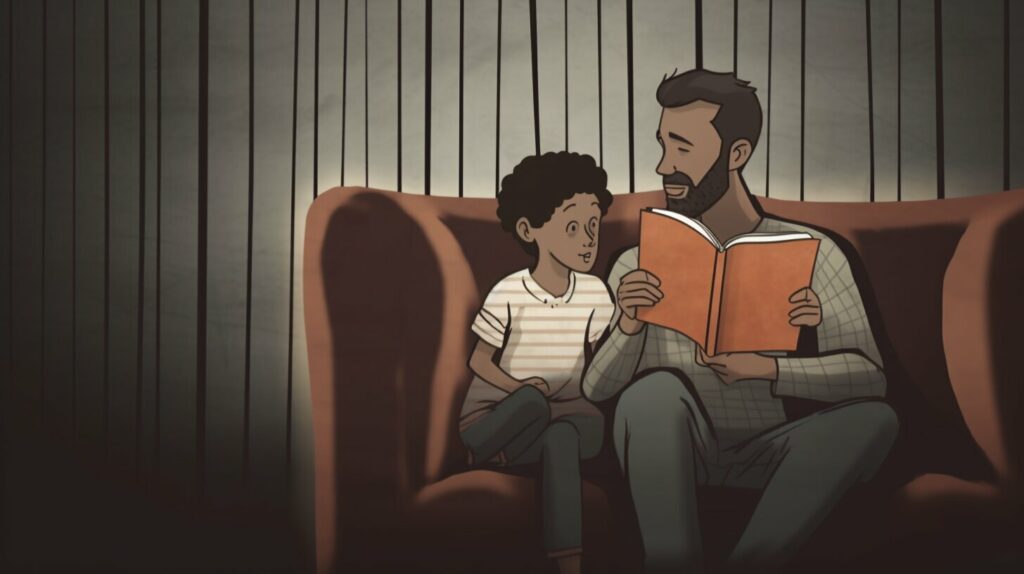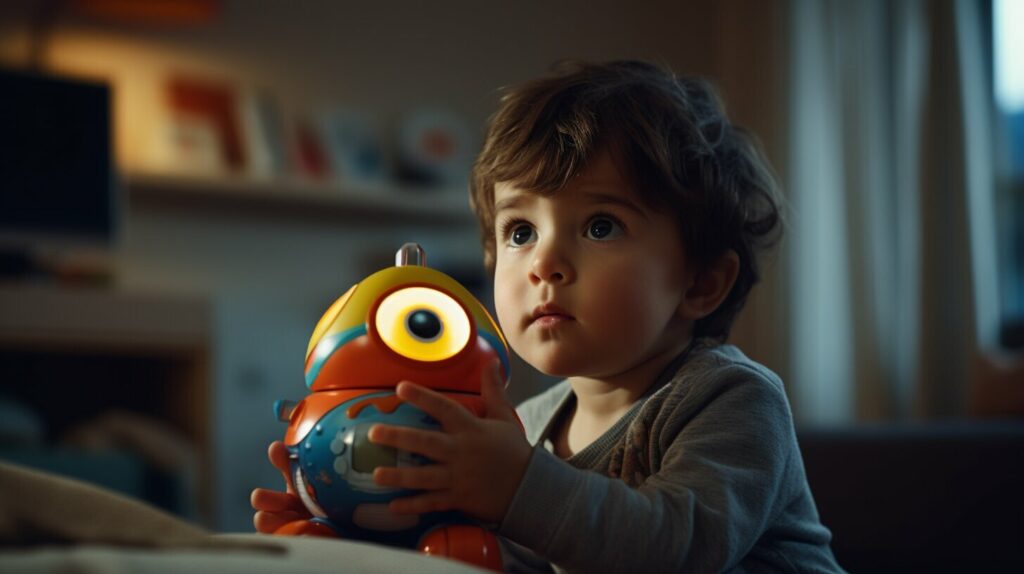Explaining the concept of how babies are made to children can be a sensitive and challenging topic for parents. However, it’s essential to address their curiosity with age-appropriate information to give them a better understanding of the world around them.
As a parent, you may wonder where to begin: How much information is too much? How do you approach such a sensitive topic? In this section, we will provide an easy-to-follow guide on how to explain a child how babies are made, with a focus on creating a friendly and comfortable environment for discussion.
Key Takeaways:
- Explaining how babies are made to children can be a sensitive topic, but it’s essential to address it with accurate and appropriate information.
- Creating a comfortable environment for discussion is crucial to ensure your child feels safe and free to ask questions.
- Tailoring your explanations based on the child’s age and cognitive development can help them better understand the concept.
Understanding Children’s Curiosity about Reproduction
As children grow, so does their curiosity about the world around them, including their bodies and how they came to be. It’s natural for children to ask questions about reproduction, and as a parent or caregiver, it’s important to provide accurate and age-appropriate information to satisfy their curiosity.
Children’s understanding of reproduction and sexuality can vary based on their age and development. Younger children may simply want to know where babies come from, while older children may have more specific questions about sex and relationships.
Ignoring or dismissing a child’s curiosity about reproduction can lead to confusion and misinformation, potentially causing harm to their development and relationships in the future. By addressing their questions with openness and honesty, you can help them build a healthy and positive understanding of human reproduction.

It’s important to note that every child is different, and there’s no one-size-fits-all approach to teaching children about reproduction. It’s up to you to gauge their level of understanding and tailor your explanations accordingly.
Age-Appropriate Explanations for Young Children
When it comes to explaining how babies are made to young children, it’s important to use age-appropriate language and concepts. Young children have limited knowledge about anatomy and reproduction, so it’s crucial to break down the information in a way they can understand. Here are some tips for tailoring your explanation based on your child’s age:
- Preschoolers: Children in this age range are just beginning to learn about their bodies. Keep it simple and focus on basic concepts like how a baby grows inside the mother’s belly and how it comes out when it’s ready. Avoid going into too much detail about sex and reproduction.
- Elementary Schoolers: Children in this age group have a basic understanding of anatomy and may have heard some myths or rumors from friends. Use clear, factual language to explain how babies are made, including the roles of sperm and eggs and how they come together to create a baby.
Remember, every child is different, and some may need more or less information depending on their development and maturity level. Make sure to gauge your child’s reaction and answer any questions they may have with patience and clarity.

Introducing Basic Concepts of Reproduction
When discussing the process of making babies with young children, it’s important to start with the basics. You can begin by explaining that humans reproduce by creating babies, which grow inside the mother’s body until they are born.
It’s also helpful to introduce the concept of male and female roles in reproduction. Emphasize that females have a uterus where the baby grows and males have sperm that can fertilize the female’s egg, which starts the process of creating a baby.
When discussing sperm and eggs, you can use simple and relatable language to help your child understand. For example, you might explain that the sperm is like a tiny seed that can grow into a baby when it joins with the egg.
| Tip: | Use drawings or diagrams to illustrate the process of fertilization and the anatomy of male and female reproductive organs, making it easier for your child to visualize the concept. |
|---|
It’s important to remember to use age-appropriate language and to tailor your explanation to your child’s level of understanding. Be prepared to answer any questions your child may have and to provide reassurance and support throughout the discussion.

Explaining the Miracle of Birth
Now that you’ve covered the basics of human reproduction, it’s time to tackle the topic of childbirth. It’s important to remember that this can be a sensitive topic for some children, so it’s important to approach it in a gentle and age-appropriate manner.
Start by explaining that after the fertilized egg grows in the mother’s uterus, it eventually develops into a baby. This process takes around nine months, and during that time the baby is fed and protected by the mother through a special organ called the placenta.
When the baby is ready to be born, the mother will experience contractions or tightening of the muscles in her uterus. These contractions help push the baby out through the birth canal, which is the opening between the mother’s uterus and the outside of her body.
It’s important to emphasize that giving birth can be painful for the mother, but it’s also an incredible experience because it brings a new life into the world. You can show your child pictures of newborn babies or even videos of childbirth, but only if you feel it’s appropriate and won’t scare or upset them.
Remember to focus on the positive aspects of childbirth and the beauty of bringing a new life into the world. It’s also important to acknowledge that every family’s experience with childbirth is different, and that’s okay.

Honesty and Openness in Communication
When it comes to discussing the topic of where babies come from, it is important to be honest and open with your child. This will help build trust and ensure that your child feels comfortable coming to you with questions and concerns in the future.
Start by creating a safe and non-judgmental environment where your child feels that they can ask questions freely. It’s okay if you don’t know the answer to every question; you can always look for reliable resources together or ask a healthcare provider for guidance.
Keep in mind that children may not have the same level of understanding or knowledge as adults, so use simple and age-appropriate language to explain the concept of reproduction. Take cues from your child’s reactions and level of interest, and adjust your explanations accordingly.
Emphasize that while the topic of where babies come from is natural and normal, it is also a private matter that should not be discussed with just anyone. Discuss with your child about what information they can share with others and what information should remain within the family.
Remember to remain patient and understanding with your child’s questions and expressions. If you are not sure how to answer a question, it is always better to say that you will get back to them instead of making something up or brushing it off.

By being honest, open, and respectful, you can help your child understand the concept of where babies come from while also building a strong and trusting relationship.
Utilizing Age-Appropriate Resources
When it comes to teaching children about human reproduction, it’s important to use age-appropriate resources that support their understanding in a friendly and relatable way. Consider utilizing books, videos, and websites that explain the basic concepts of human reproduction using simple language and relatable imagery.
For younger children, books that incorporate fun illustrations and simple explanations can be particularly effective. Some great options to consider include “It’s Not the Stork!” by Robie H. Harris and “Amazing You!: Getting Smart About Your Private Parts” by Dr. Gail Saltz.
As children get older, videos and websites can also be useful tools for reinforcing their understanding of how babies are made. The website KidsHealth.org offers a range of articles and videos that explain human reproduction and puberty in a friendly and informative way. Similarly, the YouTube channel SciShow Kids offers engaging and educational videos about topics like how babies are made and how animals reproduce.
Remember to always review and preview any resources before sharing them with your child to ensure they are appropriate and align with your values and beliefs. By utilizing age-appropriate resources, you can help your child understand the process of making babies in a fun and engaging way.

Addressing Boundaries and Privacy
When discussing how babies are made with your child, it’s important to also talk about boundaries and privacy. Emphasize that while it’s okay to ask questions and learn about the process, certain conversations should remain within the family.
Let your child know that it’s not appropriate to discuss these topics with strangers or even friends, as some families may have different beliefs or preferences about how to approach the subject. Help your child understand the importance of respecting others’ privacy and boundaries.
Additionally, discuss with your child the importance of keeping certain parts of their body private and respecting others’ personal space. This will help them understand the concept of privacy and boundaries from a holistic perspective.

By addressing boundaries and privacy in your conversation about how babies are made, you will help your child develop a deeper understanding of the topic while also instilling important values related to respecting others’ privacy and boundaries.
Answering Follow-Up Questions with Patience and Clarity
After discussing the basic concepts of reproduction with your child, you can expect them to have follow-up questions. It’s important to remain patient and answer their questions as clearly as possible. Here are some tips:
- Listen carefully and give your child your full attention.
- Encourage your child to ask questions and express their thoughts.
- Use age-appropriate language and avoid using medical jargon.
- If you don’t know the answer to a question, admit it and offer to find out together.
- Reinforce the key concepts you’ve already discussed and provide additional details as needed.
- Be prepared to answer questions about sensitive topics, such as sex and reproduction, with tact and sensitivity.
Remember, your child’s curiosity about how babies are made is natural and healthy. By answering their questions with patience and clarity, you can help them develop a healthy understanding of their own bodies and the world around them.

Conclusion
Congratulations! You have successfully learned how to explain the concept of how babies are made in a child-friendly and age-appropriate manner. By addressing children’s curiosity about reproduction with accurate and appropriate information, tailoring explanations based on their age and cognitive development, introducing basic concepts of human reproduction using simple and relatable language, discussing the miracle of birth, and promoting honesty, openness, and boundaries in communication, you have set the foundation for a healthy understanding of reproduction. Remember to utilize age-appropriate resources, such as books, videos, and websites, to further support your child’s understanding. And don’t forget to handle follow-up questions with patience and clarity, emphasizing the importance of providing accurate information while maintaining a friendly and approachable atmosphere. By following these steps, you are not only providing your child with valuable knowledge, but also fostering a strong and trusting relationship between you and your child. Happy exploring!How to Explain Consciousness to a Child in a Friendly and Simple Way?
Explaining consciousness to a child can be done in a friendly and simple manner. Start by highlighting their awareness and internal thoughts as an example of consciousness. Use relatable analogies like a light switch turning on to represent waking up and being aware. Emphasize that consciousness is what makes them unique and able to experience the world around them.
FAQ
Q: How do I explain how babies are made to my child?
A: Explaining how babies are made to your child can be done in a friendly and age-appropriate manner. Start by using simple and relatable language to discuss the basic concepts of human reproduction, such as the roles of males and females, eggs, sperm, and fertilization. You can then continue the conversation by addressing how babies grow inside their mother’s womb and the process of giving birth, highlighting the beautiful aspects of this miracle.
Q: Why do children become curious about reproduction?
A: Children become curious about reproduction as they naturally start to notice differences between boys and girls and observe pregnant women or new siblings. It’s important to address their questions and curiosity with accurate and appropriate information to help them understand this natural and normal part of life.
Q: How can I tailor explanations about making babies to my child’s age?
A: Tailoring explanations about making babies to your child’s age is crucial. For young children, focus on simple and concrete explanations using familiar concepts. As they grow older, you can provide more detailed information based on their cognitive development. It’s essential to gauge their understanding and adjust your explanations accordingly.
Q: What resources can I use to teach my child about human reproduction?
A: There are various age-appropriate resources available to teach children about human reproduction. Consider using books, videos, or websites specifically designed for children to supplement your explanations. These resources can help reinforce understanding and provide visual aids to support the learning process.
Q: How should boundaries and privacy be addressed when discussing conception and birth?
A: When discussing conception and birth with young children, it’s important to teach them about boundaries and privacy. Emphasize that these discussions should remain within the family and that not everyone needs to know the intimate details. This helps children understand the importance of privacy and respect for personal information.
Q: How do I handle follow-up questions and clarify any misunderstandings?
A: When handling follow-up questions, it’s essential to approach them with patience and clarity. Listen to your child’s concerns and provide accurate information in a way that they can understand. If there are any misunderstandings, calmly address them and offer further clarification. Creating an open and safe environment for questions encourages ongoing communication.
Note: This FAQ list is based on the structure provided and does not include a conclusion as specified.





